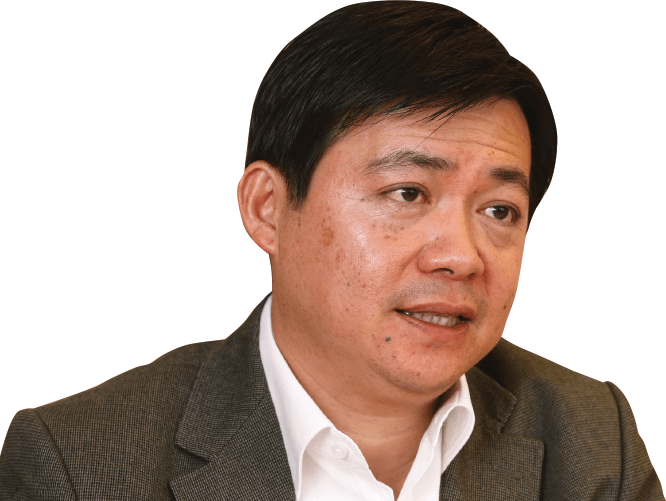
Volatility in markets like China, the US and Malaysia looks set to continue. Investment and financial planning professionals recommend strategies to ride out turbulent times.
IT HAS been a turbulent time for investors.
China's stock market crash in July and the subsequent devaluation of its currency, coupled with the prospect that the US Federal Reserve could finally raise its interest rate as early as the middle of this month, increased volatility in major bourses across the world.
This culminated in another Black Monday on Aug 24, when China's benchmark Shanghai Composite index dropped 8.5% to 3,210.8 points, its steepest one-day drop since 2007. The fall in Chinese markets also affected the US, with the Standard & Poor's 500 dropping 3.94% to 1,893 points. The Dow Jones Industrial Average dived 1,000 points within the first 10 minutes of the opening bell, but narrowed its losses to 588 points to close at 15,666.44, its worst drop since August 2011. Europe was not spared, with London's FTSE 100 Index falling 2.5% to 5,898.87 points, amounting to losses of £74 billion. Markets in Japan, South Korea and Australia were also affected.
Malaysian investors face a double whammy as the malaise on the local front looks set to continue. The FBM Kuala Lumpur Composite Index has fallen below the psychological level of 1,600 points owing to a variety of issues including weak global oil prices, political turmoil and poor investor confidence.
The ringgit has been Asia's worst-performing currency, slumping to a 17-year low to trade at 4.3 against the US dollar. As at Sept 1, the ringgit was trading at 4.16 against the greenback, having weakened 19.09% since January.
To ride out the volatility, investment and financial planning experts say value can still be found in some assets. They recommend strategies ranging from staying invested to holding cash and waiting on the sidelines.
1. Pick up liquid investments
Thomas Yong, CEO of Fortress Capital Asset Management Malaysia, says in a low-interest rate environment, investors will be better off invested in assets.

"Given the low-interest rate environment and heightened property prices in several major cities, equities should remain the preferred class of investment. I believe the primary case for investing in equities now is that market liquidity remains ample."
However, he cautions investors to brace and prepare for the new and higher level of volatility in asset prices.
"Investors will need to hold higher levels of liquid investments (or cash) however to deal with the uneven fluctuation in asset prices.
"Investing purely based on fundamentals is unlikely to be optimal and one needs to actively seek out asset mispricing opportunities caused by these large fund flows observed."
Multi-country equities and companies that are able to withstand volatility are on Yong's preferred list.
"[We] compose our portfolios largely based on bottom-up stock selections of Asian equities. One approach is to directly seek out individual stocks with quality earnings growth and sound management, with the key being finding a good entry price in the volatile environment.
"Creating a multiple country portfolio will help to reduce specific country risk and investors looking for volatility shelters could look at the utilities and gaming sectors."
Yong says the volatile global equity markets means that investor sentiment will likely continue to be jittery until clearer policy responses are evident, hopefully by next year. He foresees the global economy growing 3% this year after expanding by 3.4% in 2014, with the main growth drivers coming from the US and China.
"The quantitative easing in the US has been working well in reviving US economic growth, while China's economy continues to find a soft-landing bottom after a series of generally successful policy measures. The uneven recoveries among major countries make it difficult for one to pin down on a healthy global economic growth rate reliably," he says.
Nevertheless, he doesn't see another global financial crisis brewing as the level of systemic risks remains under control.
"Concerns over the European debt crisis and China's Banking system are somewhat contained so far, with measures continually being introduced in the last three-to-five years to curb past excesses. A financial crisis typically occurs after a period of uncontrolled excesses and that has not been the case globally."
2. Allocate small portions in risky stocks
Danny Chang, head of managed investments and product management at Standard Chartered Bank Malaysia, says while it could be risky to invest in equities now, investors stand to reap rewards if they do.

Based on MSCI All-Country World Index's historical data, he says investors who move into the market at this time have a fair chance of making substantive gains.
"The MSCI All-Country World Index's historical data shows that a fall of 3.8% and above in one day has happened only 26 times in the last 30 years. And 24 out of the 26 times, investors that got into the market and held on for one year were in positive territory, which is an average return of 25%Ó, he says.
The other two times, which saw investor returns fall into negative territory after one year, also turned positive in the second year, he adds.
"This might be something that investors could look into. It may give investors with a riskier appetite some confidence and make them feel more comfortable to move in.
"Our view hasn't changed, equities still looks good," Chang says, adding that equities in developed markets such as Europe, Japan and US are expected to outperform emerging markets.
Those who are already invested, he says, could "sit on profit". It means that while holding on to equities that generate stable and fair returns, they can invest the returns in equities that are riskier but with the potential to generate higher gains, such as those of emerging markets.
"Let's say an investor puts US$100 into equities in developed markets like Europe, Japan and US, and the value has now increased to US$120. While he continues to keep the US$100 invested in developed market equities, he can invest the US$20 profit in other areas that are more risky but could have a higher return. By doing this, he is in a way rebalancing his investment portfolio," he explains.
With crude oil prices dipping below US$50 a barrel and gold prices gaining slightly, is it a good time to invest in commodities? Chang does not think so.
"We have been underweight on gold for at least the last two years. The fact is that US interest rates are expected to rise, and this is unfavourable for gold. Secondly, the renminbi has been devalued and global inflation is expected to remain low for a while. Gold prices will stay flat.
"Commodity prices have fallen for the past two to three years, the US dollar is expected to strengthen [following a potential interest rate hike], and commodity prices are unlikely to go up. It is very difficult to be bullish on commodities unless you're bullish on China's growth, which most people are not at this moment," he says.
He advises investors chasing yield in these volatile times to lean towards income funds that invest globally in high-dividend equities and bonds.
"Diversification is the key to ride out volatility. Including bonds in an investment portfolio could cushion the risk to achieve a better overall return."
As to how long the current market volatility will last, Chang says it depends in large part on the Fed's interest rate hike and China's economic growth as these are the world's two biggest economies.
For the US, he believes the expectation of most analysts is that the Fed will raise interest rates in the fourth quarter.
"Market volatility will be reduced once the global markets receive affirmative action from the Fed," he says.
While China's growth has slowed, Chang says it is still performing fairly well with a projected annual growth of 6% to 7% this year. The government also has a handful of tools, such as cutting the interest rate and the reserve requirement ratio, to boost the economy.
This article first appeared in Money + Wealth, digitaledge Weekly, on Sept 7 - 13, 2015. Click here to subscribe from RM30 for the digitaledge Weekly and digitaledge Daily.